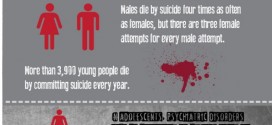New multimedia project follows a Chinese adoptee as she returns to her birthplace
By Jenny Chen
Between the years 1991 and 2005, China sent 22,061 children, most of them girls, into foreign adoption. According to the Schuster Institute for Investigative Journalism at Brandeis University, U.S. citizens have adopted more than 70% of these children. Their journeys are a migration that is generally not discussed.
Maya Ludtke was one of those children. According to adoption papers, Maya was three days old when the police officers in China’s rural Xiaxi Town found her and brought her to the Changzhou Social Welfare Institute. In June 1997, Maya was adopted by journalist and single mother Melissa Ludtke and brought to live in a small two-bedroom space on the 2nd floor of a traditional Cambridge three-decker house in Massachusetts.
Like all parents, Melissa wanted her daughter to have a strong sense of identity. And like most adoptive parents, Melissa was aware that there was a big part of Maya’s identity that was left behind in her home country. So when Maya was seven, Melissa took her back to China.
“More than anything, I wanted Maya to return to America feeling a positive connection to this country and town she’d come from,” Melissa wrote in an essay in The Broad Side which was later reprinted in Huffington Post. Melissa recalled that the homecoming itself seemed deeply emotional and frightening for Maya.
“Once in Xiaxi, Maya and I went into the outdoor market. Merchants’ eyes tracked us, mostly staring at my blonde hair. Foreigners do not show up in Xiaxi. Shoppers reached out to touch Maya and talked at her since she didn’t know what they were saying. When she recoiled, they moved away. Why was a Chinese girl clinging to this foreigner? Maya was grasping my hand tightly as we circled the stalls of vegetables, meat and fish. We hurried to our car,” Melissa wrote.
That experience haunted Ludtke for years afterwards. “I didn’t do a very good job as her mom in preparing her for that day in Xiaxi, when first she heard the story of babies being abandoned and then we walked together through the town’s marketplace and she felt upset and uncomfortable. I was upset at myself at how this final leg of our trip to China that I had hoped would go well, had not,” Ludtke wrote in an email to Asian Fortune. “Someday, I hoped Maya would return to Xiaxi on her own — and feel less of an outsider when she did.”
Maya didn’t return to Xiaxi until nine years later when she was finishing up her junior year in high school. Her mother tentatively asked her if she would like to go back to China. Her friend Jennie, who had also been adopted in Changzhou around the same time, would also be going with her. Maya agreed.

As an award winning journalist who had reported on girls and women’s issues through four decades, Melissa intuited that this visit would be a special one. Melissa herself would not be joining the girls in Xiaxi, she would stay behind in a hotel in Changzhou and allow the girls to make the trip on their own. She wanted her daughter to meet the girls who would have been her friends and playmates if she had stayed in this village without the hovering presence of an adult. And Melissa also knew that if these girls’ rare cross-cultural, girl-to-girl encounters could be captured that it was likely they would have an important and engaging story to share. So she reached out to a journalist Wu Nan, a reporter with the South China Morning Post, who lived in Beijing. Melissa gave her information about the girls’ towns and asked her to travel there and spend a few days meeting girls and find ones who wanted to meet these American girls. Once all of this was set up, Melissa hired a bilingual video crew, led by Jocelyn Ford, a longtime journalist in China and documentary film maker. The video crew followed the girls into Xiaxi as they went in to the discover the world they had left behind.
The girls arrived in China barely knowing the language (Maya had taken AP Chinese at her high school) and barely understanding the particular rural dialect of Xiaxi. And yet the footage shows that somehow they were able to connect with the girls who lived in Xiaxi. They shared music with each other, they shared life stories with each other, and they braided each other’s hair. In early 2014, Melissa decided that this was story that had a larger resonance beyond her daughter’s experience. Melissa wanted to bring her daughter’s experience into classrooms across the country.
“Many Americans began their lives in different places than where they were raised or where they are living. Only some are adoptees. Yet, like adoptees, many who came here as immigrants wonder what it would be like to go “home.” Will people back “home” accept them? Welcome them? What pieces of the home they left — perhaps before memory of being there even set in — is a part of whom they have become after
circumsta nces took them far away, physically and culturally?” Melissa wrote in her Indiegogo campaign to raise money to publish an iBook, an interactive book available on the iPad via an app, documenting Maya’s return to her birthplace. The iBook would be used in 8th grade classrooms across the country to prompt discussion on identity; how and why girls’ lives are changing in countries such as China, the unresolved challenges of ethnic and racial identity, and cultural assimilation and displacement in a time of globalization, Melissa said. The iBook introduces these themes by seamlessly blending video, photos, maps, and text into one package. The book is called Touching Home In China: In Search of Missing Girlhoods.
nces took them far away, physically and culturally?” Melissa wrote in her Indiegogo campaign to raise money to publish an iBook, an interactive book available on the iPad via an app, documenting Maya’s return to her birthplace. The iBook would be used in 8th grade classrooms across the country to prompt discussion on identity; how and why girls’ lives are changing in countries such as China, the unresolved challenges of ethnic and racial identity, and cultural assimilation and displacement in a time of globalization, Melissa said. The iBook introduces these themes by seamlessly blending video, photos, maps, and text into one package. The book is called Touching Home In China: In Search of Missing Girlhoods.
Within a month, Melissa’s Indiegogo campaign raised $41,605 of it’s $40,000 goal and the journalist is now back to work writing the remaining pages of her iBook.
As for Maya, the experience was as transformative as Melissa had predicted. Maya wrote after she came home:
“For those I met in Xiaxi, family is blood and ancestry. “You do not know your real parents?” strangers would ask me soon after we met, sympathetic and eager to help me find mine. “When is your birthday? What orphanage were you from?” To me, their words “real mother” sit heavy in my mind. Even if I’d spoken their dialect fluently, I am not sure I could have explained. I have a real mother, who raised me and loves me. My biological family might not be whom I romanticized them to be and finding such strangers would not instantly conjure love. Instead, it was in the welcoming care that countless strangers showed me — in placing watermelon slices in both of my hands, pulling a comb through my hair, and attempting to cool me in 110-degree heat — that I found home in Xiaxi, and that was enough.”
For more information on Melissa Ludtke’s project, visit www.touchinghomeinchina.com
 Asian Fortune Your source for all things Asian American
Asian Fortune Your source for all things Asian American



